
Jim Nicolow is an Atlanta-based architect, AIA Fellow, and the director of sustainability at Lord Aeck Sargent. He’s helped secure LEED certification for more than 70 projects. [Photo: Courtesy of Lord Aeck Sargent]
The director of sustainability at LAS schools us on three of his academic sector standouts.
Jim Nicolow was into sustainable architecture before it was cool. When the now-LEED Fellow joined Lord Aeck Sargent (LAS), one of the leading green firms in the country, back in 1997, the term “sustainable architecture” barely even existed. It was “ecological design” if it was referenced at all, Nicolow recollects.
Since then, the man his colleagues once dubbed Mr. Green Jeans has graduated to the rank of director of sustainability at LAS and become an in-demand speaker and writer about energy-efficient building. His work spans the typological spectrum, but in speaking with Nicolow, he conveys a clear fondness for his many education-based projects. Here, we walk through three of his notable works.

Myron Boon Hall at Warren Wilson College, near Asheville, North Carolina. [Photo: Tzu Chen]
1. Myron Boon Hall
It’s easy to see why Nicolow’s sustainable approach dovetailed well at Warren Wilson College, a small school near Asheville, North Carolina, where educators instill a strong environmental ethic among students. (Undergrads grow much of the food served on campus, and the college boasts wide-ranging, student-run recycling and composting programs.) There, Nicolow helped spearhead a LEED-targeting, two-story classroom building (15,000 square feet) that emphasizes natural light—and the valley’s breathtaking views—and stands solar ready. The college is now procuring bids to install panels on the building, which was finished last year.
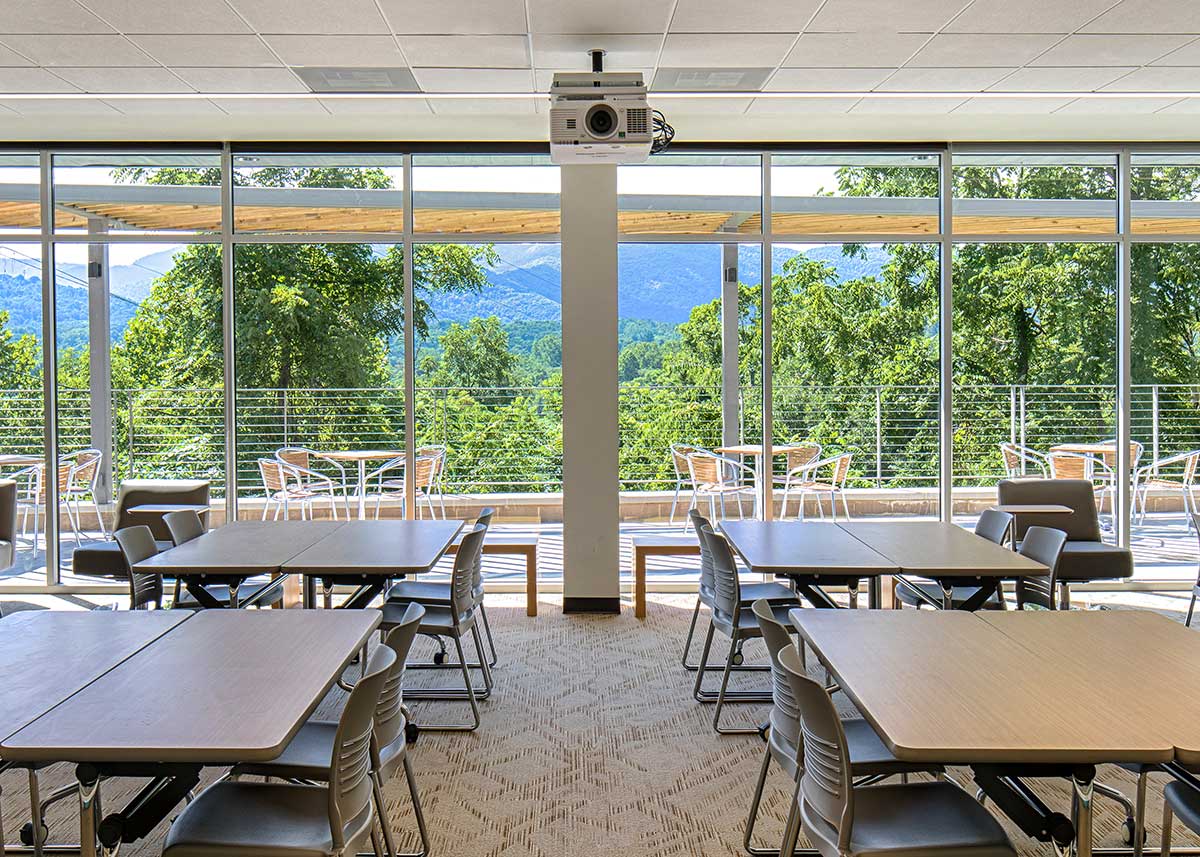
Myron Boon Hall at Warren Wilson College. [Photo: Courtesy of Lord Aeck Sargent]

[Drawings: Courtesy of Lord Aeck Sargent]

Project: Myron Bool Hall Location: Asheville area Completion: June 2018 Size: 15,000 square feet MEP: McKnight Smith Ward Griffin Engineers Civil Engineer: Davis Civil Solutions Structural Engineer: Stewart Engineering Contractor: H&M Constructors
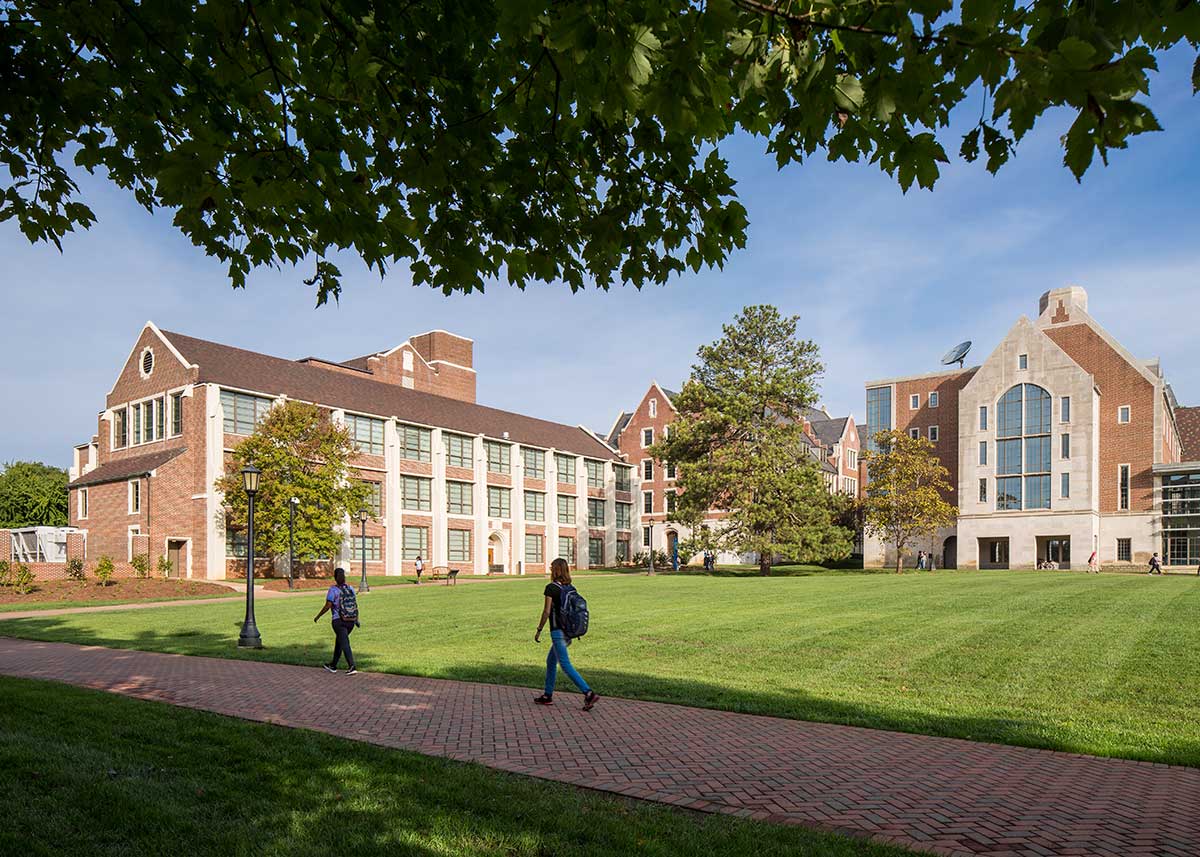
Agnes Scott College’s Campbell Hall, in Decatur, Georgia. [Photo: Jonathan Hillyer]
2. Campbell Hall Renovation
As at Warren Wilson, a green mindset thrives at Agnes Scott College, where Nicolow helped oversee the renovation of a 1951 science building—which had been left vacant for 10 years—into a progressive live-learn space that houses 96 students and also includes classrooms. The LEED Gold–certified space utilizes a geothermal heat pump for heating and cooling, and Nicolow and his team were able to preserve the building’s more historic design elements. The hall—which was one of the college’s first new projects after pledging to go carbon-neutral by 2037—measured just 15.7 kBtu per square foot per year in 2018, a phenomenal energy reading for a higher education facility, Nicolow says.

Agnes Scott College’s Campbell Hall. [Photo: Jonathan Hillyer]
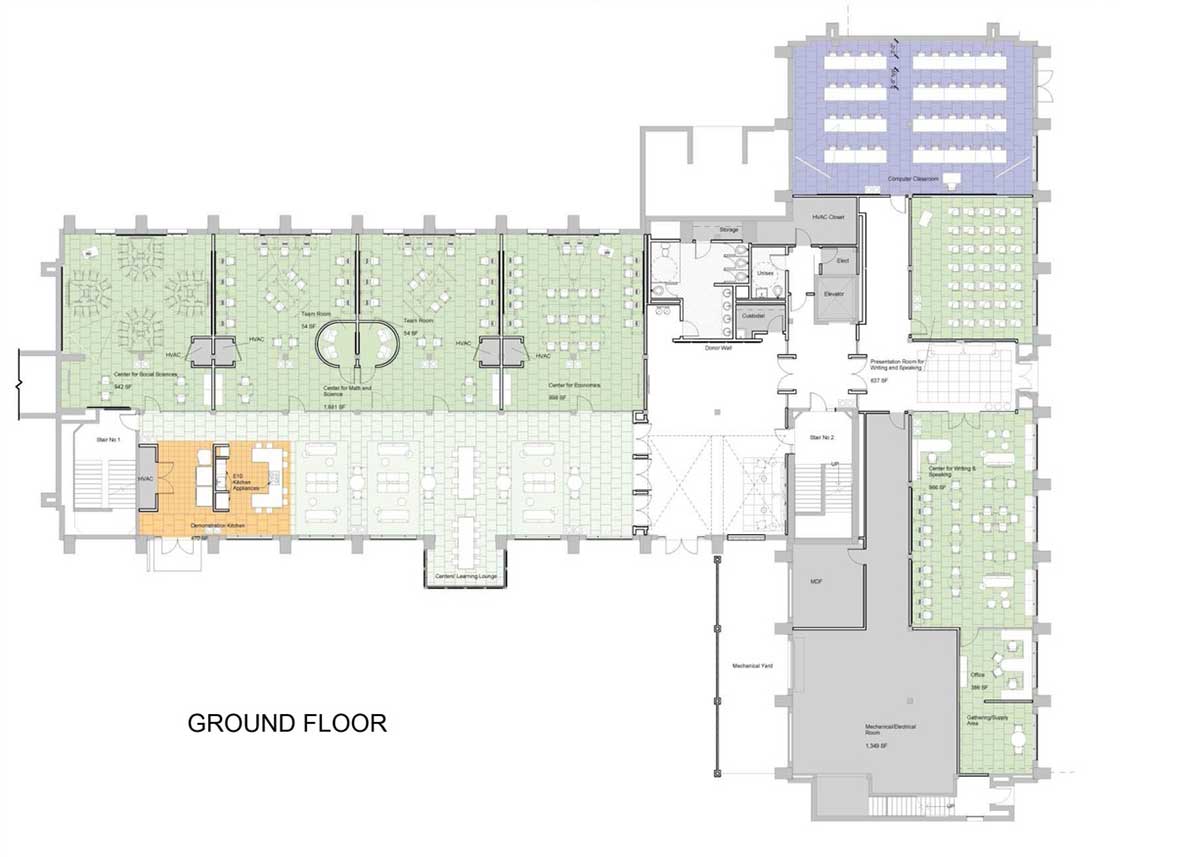
[Drawings: Courtesy of Lord Aeck Sargent]

Campbell Hall Renovation Project Details Location: Decatur, GA Completion: 2014 Size: 52,000 square feet MEP: Andrews, Hammock & Powell Civil Engineer: Eberly & Associates Structural Engineer: Uzun + Case, LLC AV: Waveguide Consulting Contractor: Holder Construction Co.
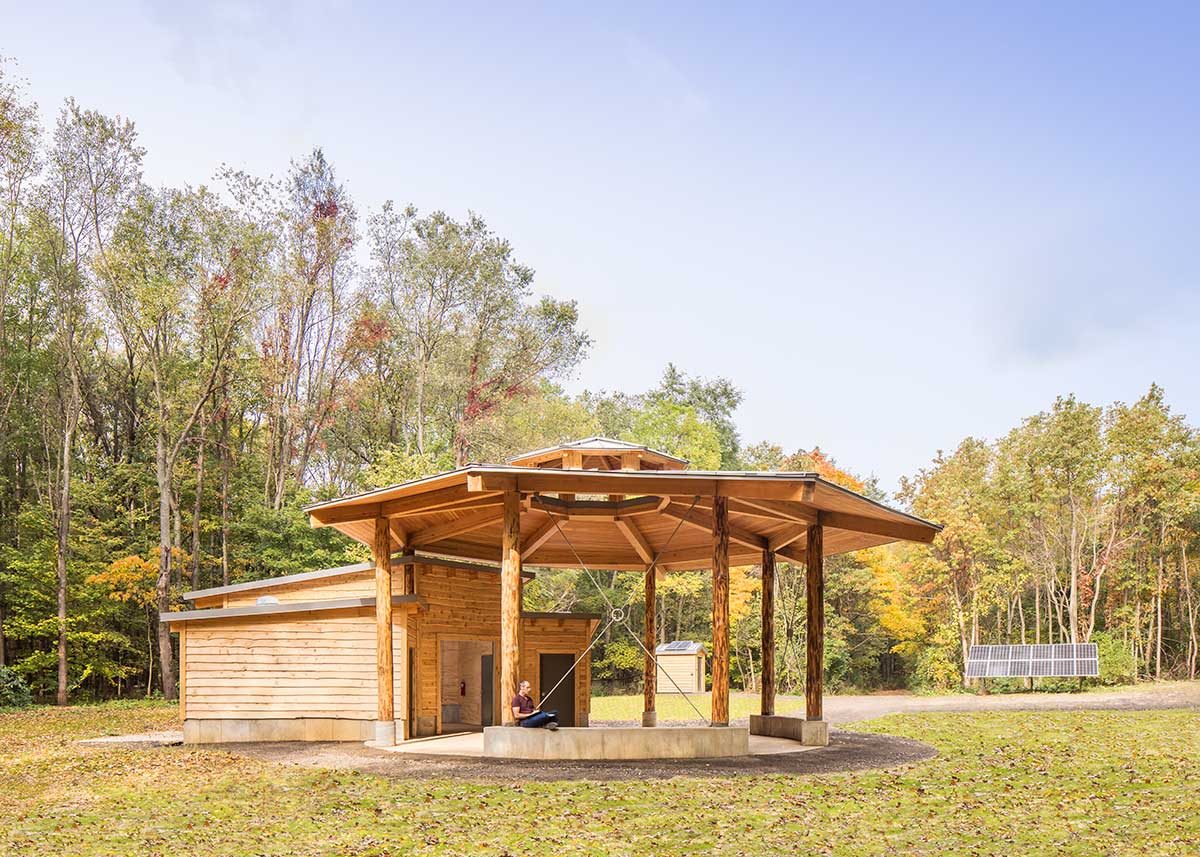
Batts Pavilion at the Lillian Anderson Arboretum at Kalamazoo College. [Photo: Jonathan Hillyer]
3. Batts Pavilion
Nicolow’s most captivating project—it’s the first we’ve encountered that utilized bovine-powered transportation during construction—might be the Batts Pavilion at the Lillian Anderson Arboretum at Kalamazoo College. The net-zero, off-grid pavilion/learning center was built atop a former landscape waste dump that was swarming with invasive species. Pine, used as support columns for the structure, was hauled by oxen from a nearby—but inaccessible by vehicle—area. And if you’re a visitor who wants water, you have to work for it. “A biologist who advised on the project wanted people to understand the energy involved in using water,” Nicolow says. The solution? Install a hand pump. There’s also a composting toilet and solar energy systems—all of which, despite the pavilion’s modest 1,600 square feet, adds up to “one of the most fully sustainable projects I’ve done,” Nicolow says.

Batts Pavilion [Photo: Jonathan Hillyer]
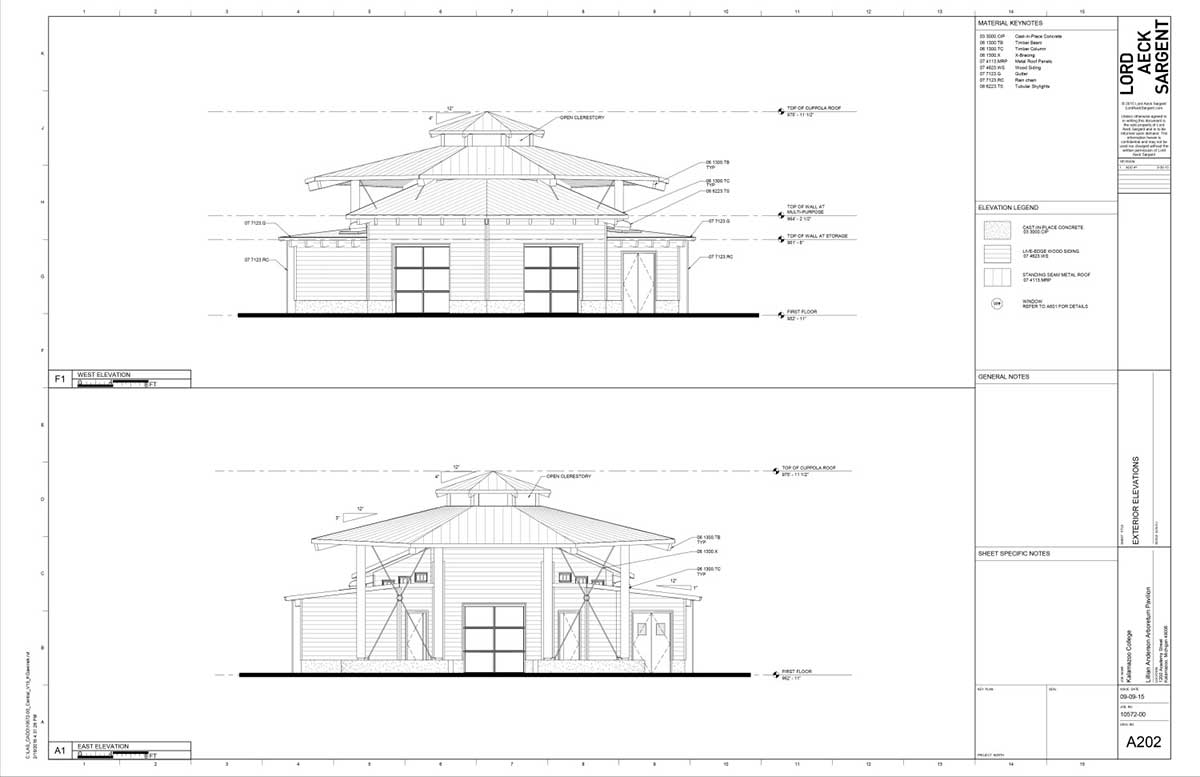
[Drawings: Courtesy of Lord Aeck Sargent]
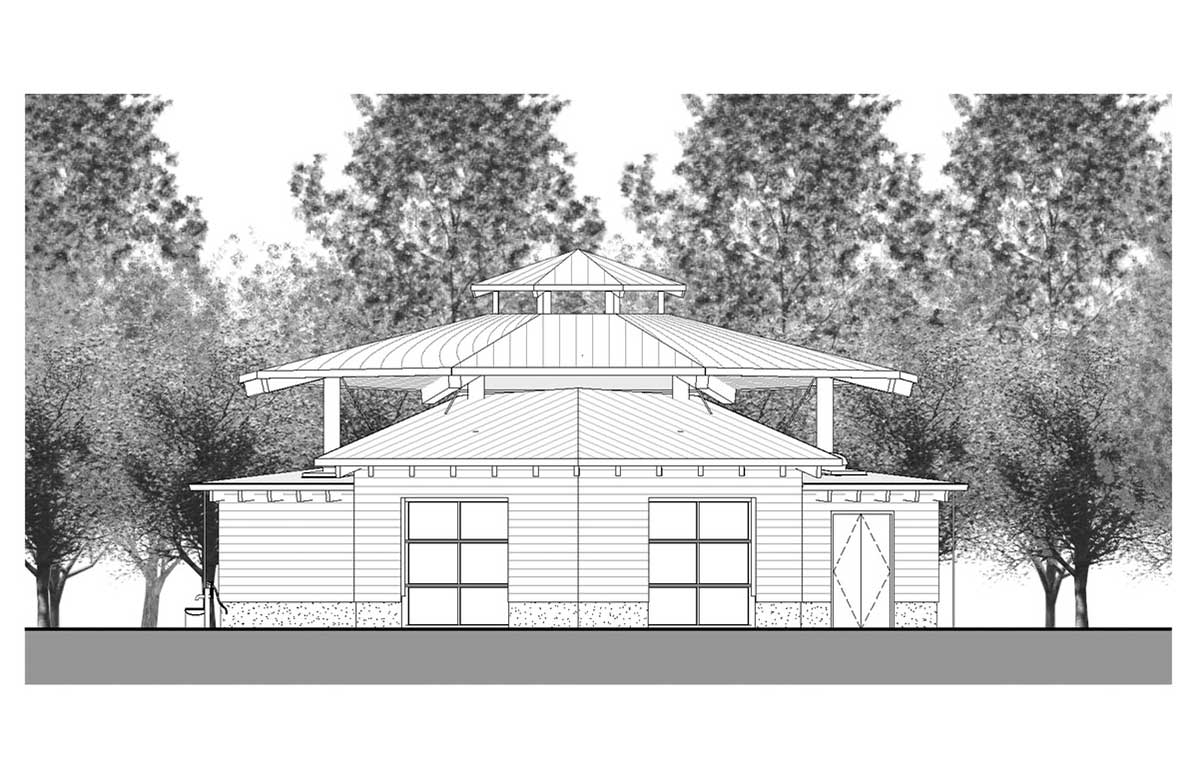
Batts Pavilion Project Details Location: Kalamazoo Completion: 2016 Size: 1,600 square feet MEP: Peter Basso Associates Structural Engineer: Nehil-Sivak, PC Civil Engineer: Hurley & Stewart Contractor: AVB Construction LLC Landscape Architect: Johnson Hill Land Ethics Studio
